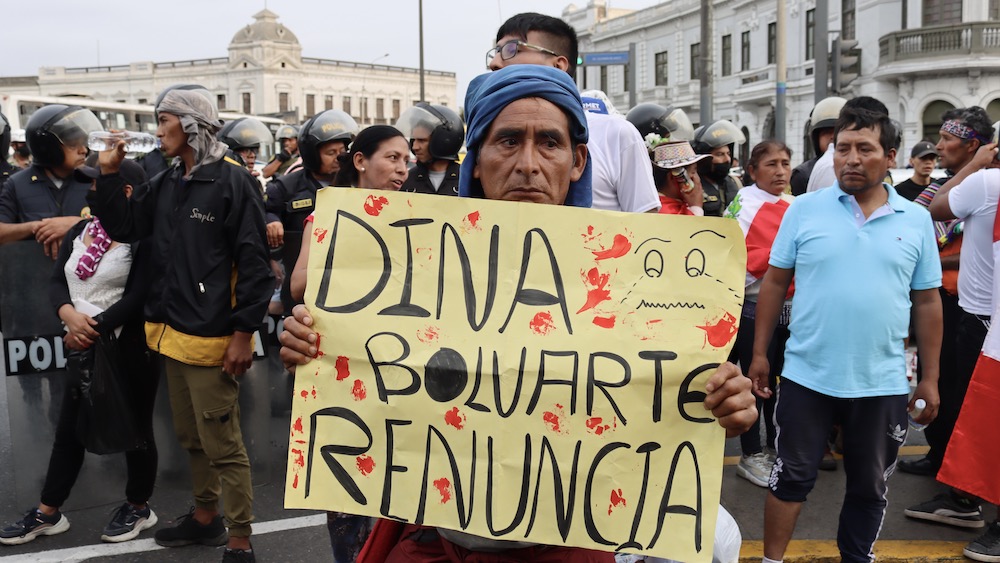December 7 marks one year since the coup against President Pedro Castillo in Peru. He was replaced by the unelected Dina Boluarte, who would quickly unleash a regime of death against mass protests within the country.
On December 7, 2022, Peru witnessed the removal and arrest of its constitutional president, Pedro Castillo. Castillo had attempted to dissolve the country’s Congress and implement an emergency rule in the face of a third impeachment request that year, but the far-right Congress quickly overruled him and approved the impeachment request against him for “permanent moral incapacity” to continue in office. The request was approved with 101 votes in favor, six against and 11 abstentions. Hours later, with Castillo in police custody, his Vice President, Dina Boluarte, became Peru’s new, unelected president.
Following the coup, Peruvians unleashed mass protests, to which Boluarte responded by killing as many as 57 protesters in a series of massacres. The Inter-American Commission on Human Rights (IACHR) reported that the state’s response to protests was characterized by the “disproportionate, indiscriminate and lethal use of force.” It added that in some cases, the actions could be classified as “extrajudicial executions” and “massacres.”
Boluarte later laid the blame on the protesters themselves for these deaths. “In the six months that we have been in government, we have practically been firefighters putting out almost 500 violent demonstrations. Right now, I call on these people who are once again announcing a third takeover of Lima or the third takeover of Peru, how many more deaths do they want? Doesn’t it hurt your souls to have lost more than 60 people in these violent mobilizations,” said Boluarte.
Despite the massacres, the people of Peru kept the struggle alive. July 19, tens of thousands of Peruvians took to the streets across the country to revive the struggle against the coup regime led by de-facto President Boluarte. Workers, peasants, students, members of Indigenous organizations, social movements, and left-wing parties mobilized in over a dozen departments.
They demanded Boluarte’s immediate resignation, closure of the right-wing dominated Congress, fresh elections, a constituent assembly to draft a new constitution, justice for those killed and injured by the state forces during the protests, and freedom of those arrested including former President Castillo. The Ombudsman’s Office reported that it recorded mobilizations and road blockades in 64 provinces.
In addition to receiving support from far-right sectors in Congress, Boluarte showed her loyalty to the right and foreign capital by moving to privatize lithium mining on April 10, in addition to other anti-people measures.
Today, following the release of former dictator Alberto Fujimori from prison, the nation once again prepares for a fresh wave of protests.





